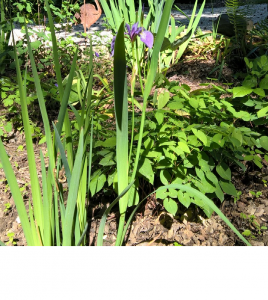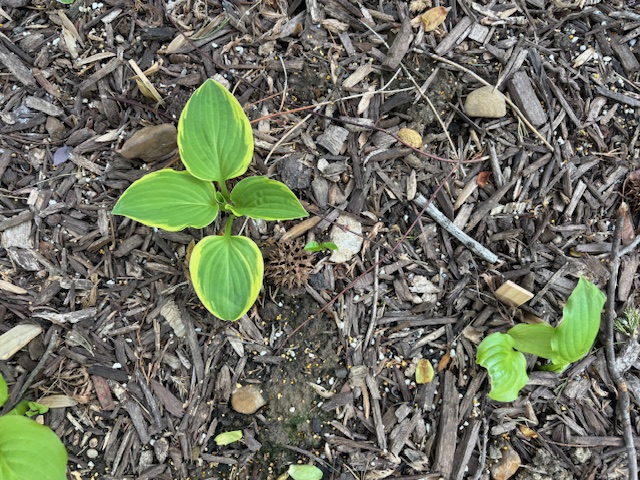Adding Epimedium to the Garden (Bishop’s Cap/Barrenwort)
Views: 2688

I have so much to learn about plants and gardening – but then, who doesn’t? Whenever I start thinking too highly of my skills and knowledge, something happens to remind me…
Several years ago, I was plant shopping with a friend.
“Look!” she said, pointing excitedly to a little green plant, “It’s called Bishop’s Cap and it’s a native!”
“Will it grow in shade?” I asked.
“Oh, yeah.” she said.
Well, at that time, I was a “native plant newbie” and figured she knew more about native plants than I did. So, I bought it and planted it by a large sweet gum tree. It had nearly heart-shaped leaves and turned out to be a nice groundcover with bright yellow flowers in spring. Over the years, it spread, but not aggressively and didn’t demand much attention. Good plant!
Bishop’s Cap?
Earlier this year, I thought I’d write about it. Which meant I needed to do more research and find its scientific name. I “googled” Bishop’s Cap and guess what? The plant on the computer didn’t look like my plant at all! So much for that topic!
Several weeks later, I had my weekly lunch date with my sister-in-law, M. Now, M is a casual gardener, content to have a few houseplants and keep the front yard looking nice. In her eyes, I’m the real gardener. The conversation somehow got around to groundcovers and she mentioned she really liked the epimedium she had planted in her front yard, because it was a great groundcover without being overly aggressive. I remember thinking that I wasn’t familiar with that plant and needed to look it up.
Epimedium
When I got home, I googled “epimedium” and guess what? There, right in front of me was my “Bishop’s Cap”! It isn’t a North American native (most epimediums originate in China, Asia or Europe), but my friend almost got the name correct. Epimediums are known as bishop’s hat, barrenwort, fairy wings, and horny goat weed (I sorta like that last one!).
I think what I have is a hybrid: Epimedium x versicolor ‘Sulphureum’, hardy in Zones 5 to 9. An herbaceous perennial, it’s growing about 6 to 8 inches high in my garden. In early spring, its bright yellow blooms are held above the foliage by wiry stems, so they are quite visible and glow in the shade.
The plant spreads slowly by underground rhizomes, but it’s easy to pull out a bit of it if it’s beginning to crowd another plant. If you want to propagate epimediums, just dig up part of the plant with some roots and plant. Late summer is a good time to propagate, but anytime during the growing season will work, as long as you keep it watered and don’t wait until too late in the fall.
This is one of those plants which has been used for centuries as a medicinal. The Chinese herbalists seem to have gotten this one right…it shows some usefulness in preventing bone loss in women and helps “romantic” interest in men (I guess that’s where the “horny goat weed” came from).
Stay Green, good friends!
Meet Dona Bergman
Dona Bergman is a founding member, Southwest Indiana Chapter of the Indiana Native Plant & Wildlife Society, and an Advanced Master Gardener.







